There is a lot of information out there on the best way to prep for an upcoming natural disaster or governmental breakdown.
Many tidbits and so-called “facts” are spread via Internet articles, TV shows, or even conversations with like-minded friends. Sadly, there is a growing number of tips that are, quite frankly, dangerously misleading.
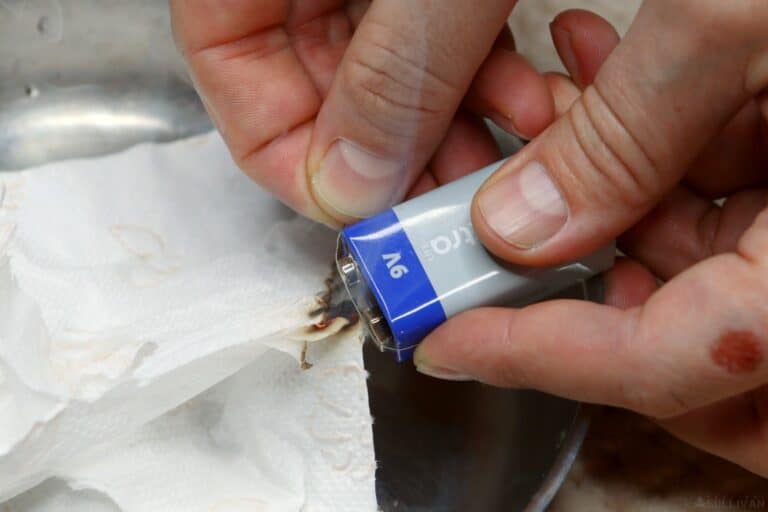
In a survival scenario, any misstep can cause hunger, pain, strife, and ultimately death. To combat this, below is a list of common tips being taught and passed around that are blatantly incorrect.
Each of these false facts will also come with a proper, correct rule to keep in mind when preparing yourself and loved ones for the hard times to come.
Table of Contents
Myth #1: Food is just as important as Shelter, Fire, and Water.
When planning a camp always make sure to consider four things. First, is there shelter and will it survive Mother Nature? Without this, illness and exhaustion can take over.
Second, is there an easy way to create and extinguish a fire? Obviously, a fire is important to keep party members warm, to cook food and to sterilize stream water. It also can signal a position to help someone who is lost or communicate with a friendly group when made extra smoky.
Third, is there a water source near the survival site? Stored water can get the job done for a bit, but there is a reason most major cities were built near rivers, lakes, or other water sources. Dehydration causes extreme health issues much faster than starvation.
If there is ample water at your campsite, the human body can survive for multiple weeks by sustaining itself with its own stored fat.
The fourth part of a functioning camp is storing food and rationing it appropriately. Children and other family members may not be able to deal with extreme hunger in the way a trained survivalist can.
What is unwise, though, is to expect hunting to add to your food reserve. It has become common for the movie and TV industry to show preppers hunting with bows and arrows or small rifles to catch rabbit, squirrel, or other small varmints. This is just to add action scenes to draw audiences in.
The reality is much different. It is important to limit movement in a survival situation.
Remaining stationary will make it easier for rescuers to find you and the effort you expend hunting will cause you to lose calories and valuable nutrients to gain only a small amount of food for the group.
Reality: Hunting is Not Reliable
When you break it down, success in hunting relies in many things outside the prepper’s control. First, the bow or rifle must function properly. Second, there must be an ample amount of game.
In a survival situation, this will be problematic because the number of natural predators will greatly increase when mass groups of people migrate to wooded areas.
Third, the kill must occur near the campsite for it to feed the others. If a kill happens too far from camp, not only will valuable time and energy be wasted, but also the prey will likely spoil on the return journey.
Building a large food stockpile, however, has none of these variables and none of the inherent dangers in stalking wild prey. The goal is to survive. Increasing the risk of harm does not add to the odds of success.
Myth #2: Starting a Fire with Two Sticks is Easy
The weather and climate around the campsite are not reliable. It could be extremely wet, muggy, or raining on the day of disaster.
Furthermore, using the bow drill or the hand drill methods is extremely time-consuming, and there’s a good chance it won’t work.
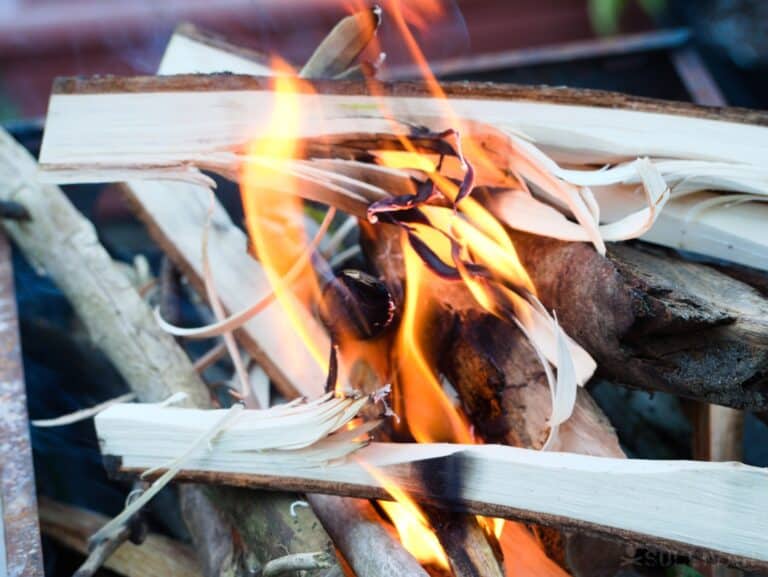
You need to have the right types of wood, and you need to spend a lot of energy to see those first sparks. Even trained survivalists fail at this all the time.
Reality: Have Multiple Ways to Start a Fire
A prepper should always always have at least three ways to start a fire with them . These are a spark-rod, storm proof matches, and a lighter. When you’re trapped or the sun begins to set, handy technology is the best bet.
Fire is one of the most important aspects of a survival situation (as discussed above), and cannot be left to chance.
Myth #3: Popular Survival T.V. Shows Give Good Advice
This one may seem silly and completely obvious, but it’s surprising how often these television shows get brought up when discussing survival scenarios.
Make no mistake about it, these shows are meant to entertain- not educate. So, feel free to watch them, but don’t expect to bring Bear Grylls moves out into the field.
The realities of survival are not entertaining business. It is cold nights. It is hard conditions and a lot less action and drama then on TV.
Reality: Reality TV is Just Entertainment
The fact is reality shows are heavily scripted. They consistently have the three-act structure you find in other shows like the many Law and Orders and Star Treks.
The appearance of real hardship just allows the audience to put themselves in the survivalist’s shoes, which makes it more entertaining than other programming.
Would a camera crew just watch and record passively while a person was in a truly dangerous survival scenario?
Myth #4: Suck Out the Venom Out of a Snake Bite
This one applies to survival scenario, but it is also useful information in any normal wilderness outing.
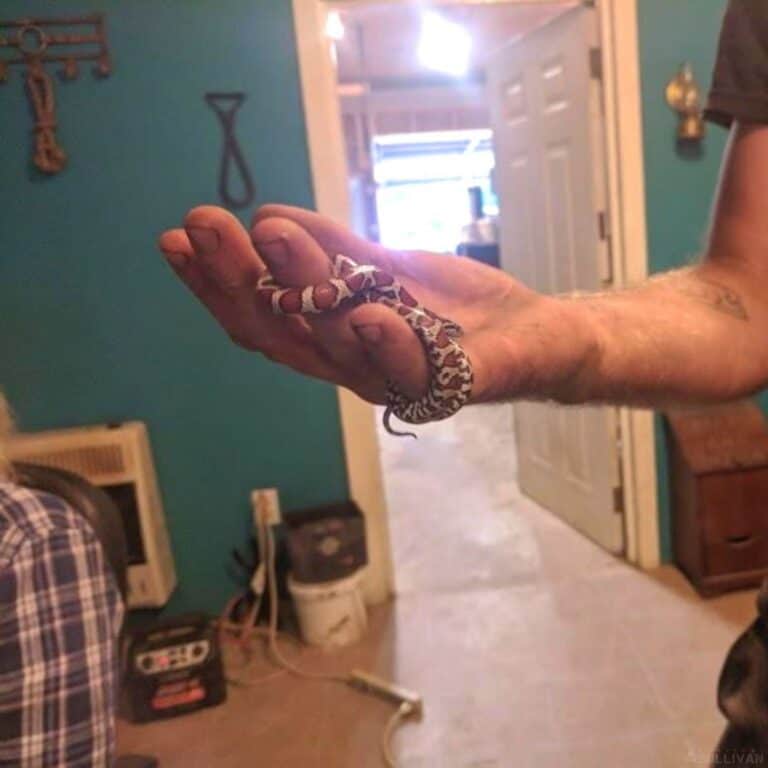
Recent medical findings have made it clear that putting a suction device around a recent snake bite causes more damage than if the wound was left alone. Do not, under any circumstance, cut the wound and start sucking. That may work in Indiana Jones, but it will harm the victim in real life.
If a snake bites someone, immediately get the victim to a hospital. In an impossible to predict survival scenario where the luxury of healthcare is not available, clean and wrap the wound.
Reality: Speed Cleaning is The Only Solution
Get the victim to a hospital as fast as possible in a normal scenario. The more time you let the wound sit, the more tissue will get damaged. Drive as soon as possible.
In an extreme survival scenario, clean the bite with water and whatever first aid equipment is available. Statistics show that 0.00007% of all snakebites become lethal, and in 30% of bites, no poison is transferred at all.
The best way to deal with snakebite is to prevent them from happening. Don’t put your hands or feet in an area you haven’t inspected or cannot see. Also, it is important to note that a rattlesnake’s head can still bite a few hours after death because their nervous system is still active.
Myth #5: You Should Run from Bears
Bears are known as strong, powerful animals. Their speed, though, is underrated. If you try to run from one, it will mostly likely decide you are prey and pursue.
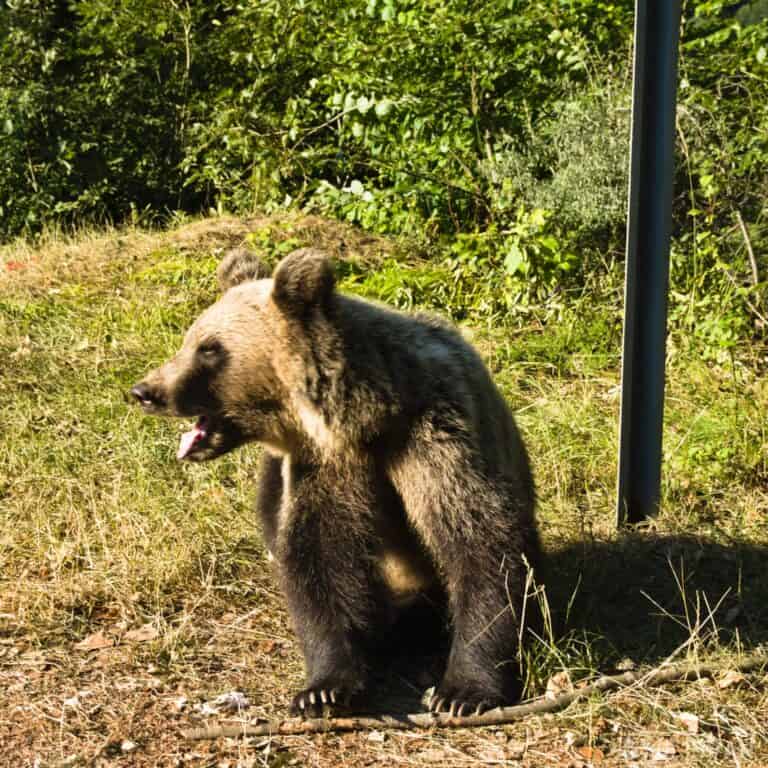
Once it decides you are food, it will be much faster than any human- even pro athlete like LeBron James.
Reality: What You Should Do Depends on the Type of Bear
If you are walking through the woods and encounter a black bear, make yourself look big. Puff up your chest, extend your whole frame as much as possible. Then, this may sound strange, but shout and scream. The bear was afraid from the start and this display will make him run.
Grizzly Bears are more of a problem. First, never make eye contact. The animal will take it as a display of dominance. Now, if the bear is not approaching, slowly walk away. If it is slowly approaching you, stand your ground.
The best way to deal with a grizzly is pepper spray. Of course, only spray the bear as a last resort. Attacking a bear first is never a good decision. If it charges, though, let the spray loose, and it will be stunned.
Learn more about what to do if you see a bear here.

Myth #6: When in the Desert, Find Water as Soon as Possible
It is possible to survive 48 hours in the desert with no water. The most important thing to keep in check in a desert environment is sweat. Keep water in the body. Immediate effort to find water can cause massive sweat and an early grave.
Reality: Keep Cool, Stay Alive
Find shade. There is a reason people in the Middle East wrap themselves to cover most of their bodies and cowboys only expose their face. Too much sun is extremely dangerous.
In a desert, find shade in the peak heat hours. Then, toward the end of the day or the morning go looking for a sustainable water source.
Myth #7: As a Last Resort in a Desert, Drink Your Pee
It makes sense to think your body will be able to clean the liquid and take the left-over water. However, this only works if your body is in peak condition.
Reality: The Body Will Be Too Hot to Process the Liquid
When on the cusp of heat stroke, drinking your own urine will simply push you over the edge. The kidneys won’t be able to cool down.
A good tip, though, is to pee on a bandana and then wear it. As the liquid in the bandana evaporates, the head will be cooled.
Myth #8: If You Boil Water, It Will Definitely Be Drinkable
Boiling will 100% kill all organisms and germs in the water. However, if harmful chemicals are present, they won’t be eradicated. The same goes for muddy water. The water must be strained before drinking.
Reality: Pay Attention to Where Water Comes From
Make completely sure the water you drink doesn’t come from a contaminated stream. Of course, moving water will always be safer than still water. Therefore knowing the area is always necessary.
A prepper familiar with the area will know where chemical plants are located and what water is dangerous. If the stream is not chemically tainted, simply boil the water and it will be completely safe.
Myth #9: Eat Snow to Rehydrate
It makes sense. Snow is just frozen water. If it’s eaten, you’ll get rehydrated. The problem, though, is like the common myth that says to drink urine in the desert (discussed above).
Reality: Eating Snow in Freezing Environment Causes More Damage
If you’re near hypothermia, eating snow will push you over the edge. If possible, melt the snow and drink the water.
This should be a fairly simple process. In extreme situations, hold the snow to your clothes and drink the water that is created or use a bottle and cloth to melt the ice, which both stores and filters water.
Speaking of which, you can learn more about how to use snow in survival situations here.
Myth #10: The Most Important Part of a Shelter Is the Roof
The roof is important when it rains, no one will deny that. However, in every other weather condition, a dry floor is much more necessary for survival.
Plus, even in the rain, having no floor will cause the seepage and the surrounding wetlands to soak the sleep space anyway.
Reality: The Floor is The Most Important Part of a Shelter
The ground gets cold at night. A roof is a good bonus, but it doesn’t give support. The foundation of every shelter is the floor, and if a roof is built with no foundation it won’t be as sturdy as possible.
Myth #11: Drinking Alcohol Will Keep You Warm
This myth comes from the fact that alcohol expands blood vessels and can clearly numb the body. In fact, a body consuming adult beverages will, in fact, feel warmer. However, the sensation won’t match reality.
Reality: Drinking Alcohol Will Make You Colder
Although you won’t feel it, alcohol will make you colder because drinking spirits causes blood to rush to the surface of the skin. This creates a warming sensation, but the internal organs are losing warmth and blood flow.
This can lead to many dangerous outcomes. For one, in a survival situation, your senses are your best friend. They tell you what your body needs to keep fighting the next day. To dull them, will hinder your chances of coming out alive.
Also, alcohol hurts the immune system, which will make it easier to get dangerously ill in cold environments.
Myth #12: Bears Can’t Run Downhill
This myth originated because a bear’s front legs are slightly shorter than their back legs and thus someone at some point mistakenly felt this would prevent them from running downhill.
This is completely false. In fact, bears can run downhill just as fast as they can run uphill, approximately 35 miles per hour. You aren’t going to outrun a bear by going downhill so don’t try it.
Reality: Bears can run just as fast downhill as on other terrain. Never try to outrun a bear.
What you should do when you encounter a bear varies depending on the type of bear it is and whether the bear is protecting food or cubs. But regardless, you should never try to outrun a bear.
In most cases, it’s better to back away slowly, keeping your eyes on the bear to gauge its reaction. If you are venturing into bear territory routinely, carry bear spray which is over 90% effective in deterring a bear if it charges you.
Myth #13: Moss Always Grows on North Side of Trees
Many people mistakenly believe that moss only grows on the north side of trees. This myth has been perpetuated and, in some cases, people have used it to try to navigate their way out of a wilderness situation. If you’re in the right area and following the right type of moss, it may be true but only because you’ve gotten lucky.
Reality:
Most moss prefers specific conditions, such as shade and moisture to grow. This can sometimes occur on trees and other surfaces regardless of their directional positioning simply due to other conditions that provide the ideal conditions moss needs.
Moss will grow under the following conditions:
- On shallow gradient surfaces
- On coarse surfaces (like tree bark) where water runs slowly off
- On trees below a fork in the branches
- On surfaces where rainwater naturally pools
- On trees near the ground if the area nearby is constantly moist and evaporating moisture into the air
- If overhead branches are continually dripping water onto a surface
You could end up going in the opposite direction you think you are going if you try to navigate using moss. If you can learn to observe moss and correctly identify why it is growing where it’s growing, then this trick could work if you are in the northern hemisphere.
But without the knowledge and practice of identifying moss conditions, you cannot simply determine direction by where moss grows.
Myth #14: Snakes Can’t Bite Underwater
Most snakes live on land, especially in the U.S., so you may be less likely to see a snake in the water.
Reality: All snakes have the ability to swim, and will bite underwater if necessary.
In addition to the fact that all snakes can bite underwater if threatened, both the coral snakes and the cottonmouth snake are venomous aquatic snakes.
These snakes routinely catch prey underwater and can bite you from beneath the water if you encounter them and they feel threatened. In some cases, you may not even know that you’ve been bitten until symptoms develop.
If you begin sweating, have a headache, are thirsty, or vomit within a half hour after swimming, it’s a good idea to check yourself for bitemarks. Other symptoms that develop can include stiffness, body aches, and a stiff or rigid jaw.
Seek medical attention immediately if you develop these symptoms after swimming, especially if you can locate bitemarks.
Myth #15: Rub Frostbitten Skin to Warm It Up
The common belief is that rubbing frostbitten skin will work to warm it up. This makes sense because when your arms or hands are chilled and you rub them, the friction warms them up. But this could not be farther from the truth for skin that is actually frostbitten.
Reality: Rubbing Frostbitten Skin Can Cause Further Damage
If your skin is already frostbitten, it means that ice crystals have formed in the tissue of your fingers, toes, or exposed skin.
When you rub frostbitten skin, it actually can cause the ice crystals to damage new cells. So, rubbing frostbitten skin will actually cause more damage!
Instead of rubbing the skin, treat frostbite by providing medication for the pain as you gradually rewarm the frostbitten tissue.
Myth #16 Cotton is Great for Layering
Layers are a good protection against the cold weather, but you need to pay attention to what you use for those layers.
Many people believe that because cotton has good insulative properties, it works well as a base for layering in cold weather.
Reality: Wearing Cotton Against Your Skin Can Steal Heat from Your Body and Cause Hypothermia.
Cotton loses its ability to insulate as soon as it gets wet. If you wear cotton as a base layer, against your skin, it will absorb moisture from your body and leave you feeling damp.
Wearing cotton when you sweat is worse, because it begins to cool down your body through conduction.
In addition, the fibers in cotton can also absorb more than 20 times their weight and hold that moisture much longer than wool or synthetic material.
In very cold weather, this can actually steal vital warmth from your body, leaving you susceptible to hypothermia.
Myth #17: If Animals Eat It, Humans Can Too
Many people believe that because humans have shared biology with animals, it means humans can eat plants or other things that animals eat. This cannot be farther from the truth.
Reality:
Animals eat a lot of things that are not safe for humans to eat. Birds eat a variety of berries that are toxic for humans.
Squirrels and other animals eat nuts, mushrooms, and plants that are not safe for humans to eat at all. If you’re stranded in the woods or wilderness, never eat anything you don’t know is safe for human consumption.
Myth #18: You Can Follow Birds to Find Water
This myth has been perpetuated primarily because it can sometimes work. But you must know the type of bird you are following, and you must be aware of bird flight patterns in order to make this work for you.
Reality: Following Flying Birds is Not a Reliable Method for Finding Water
Some birds range long distances looking for food. Birds may be headed for a clearing to spend the night or could be searching for food or chasing pretty, rather than seeking water when you see them.
Unless you know the type of bird and have observed their behavior, you can’t possibly know where they are going at any given moment.
In an emergency, it’s just not going to be a reliable way to find water. You could end up walking for miles in the wrong direction.
Myth #19: Treating Hypothermia by Quickly Warming the Victim
The natural reaction to someone who is experiencing hypothermia is to get them warm as quickly as possible.
So, you might think that getting them into a tub full of hot water, close to a fire, or even warming them with a hot hair dryer is the best way to do that.
In reality, heating someone up quickly when they are hypothermic is very dangerous. It can cause extreme pain and could even result in a heart attack. You do want to get them out of any wet clothing they may be in as soon as possible.
Reality: The Best Treatment for Hypothermia is Gradual Warmth.
Instead of warming a hypothermia victim quickly using high heat, you should warm them gradually.
The best ways are to use a lukewarm (not hot) bath if possible or if available hot-water bottles tucked into each arm pit. If nothing else is available, skin-to-skin contact with someone who is not hypothermic.
Myth #20: Punching a Shark in the Nose Can Save Your Life
Though you may have heard that one way to deter a shark who is attacking you is to give it a good swift punch square in the nose, it’s not the best option.
Reality: Eyes and Gills of a Shark Are Most Sensitive and You Likely Can’t Punch a Shark Hard Enough to Deter It.
In most cases, a shark is going to come at you from below or from behind you, rather than head on.
So, even if you could manage to swing and punch a shark hard enough in the nose to deter it, you likely won’t get the chance. You stand a much better chance if you claw at the eyes or gills which are more sensitive areas.
Careful With These Myths…
Misinformation is dangerous, especially for a survivalist. Nothing can make you feel worse than buying into one of the above myths only to realize it was a lie- all too late. So please, stay informed. It’s a matter of life and death.
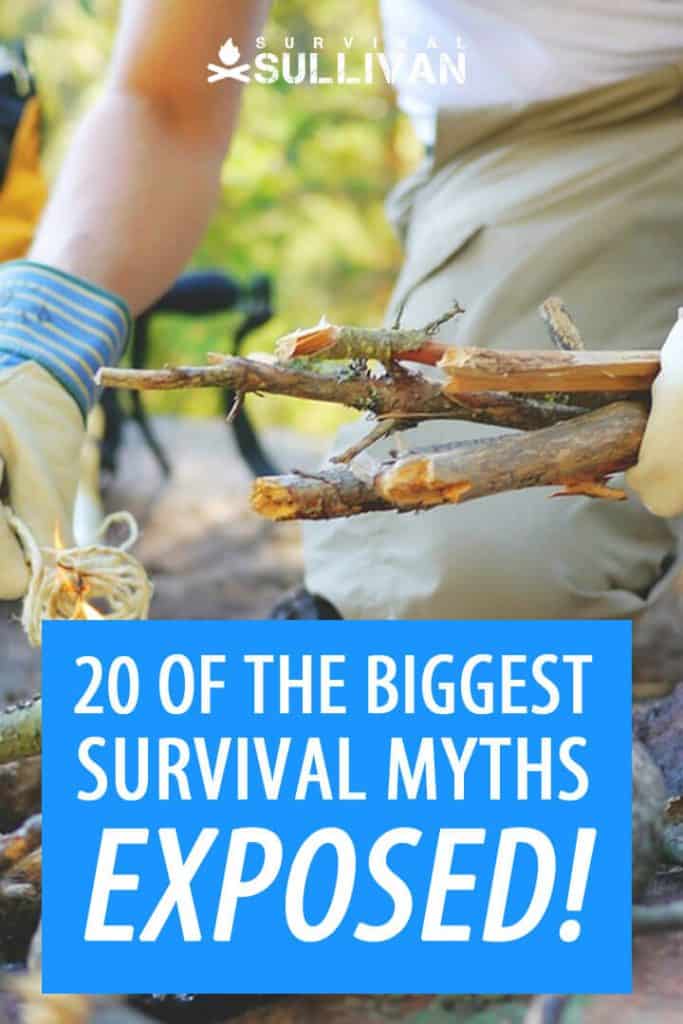

Born and raised in NE Ohio, with early memories that include grandpa teaching her to bait a hook and watching her mom, aunts, and grandmothers garden, sew, and can food, Megan is a true farm girl at heart.
For Megan, the 2003 blackout, the events of 911, and the increasing frequency of natural disasters like Hurricane Katrina, spurred a desire to be more prepared. Soon to be living off-grid, this mother of four and grandmother of ten is learning everything she can about preparedness, survival, and homesteading.

I recently read up on the snake bite thing. It’s not a 100% right answer but more of “it depends”. The critical bit is time until expected medical treatment. Your advice is right for expected medical treatment soon or in a few days but if medical treatment is not expected within a reasonable amount of time sucking the venom out with a snake bite kit early on can lesson the danger. You shouldn’t use your mouth though as the venom can cause you issues. I do carry one of the old suction kits just in case, but know that medical attention is a much better idea.